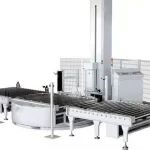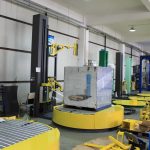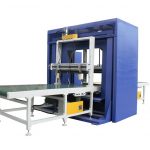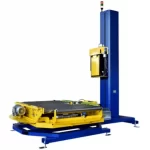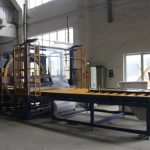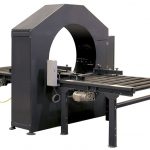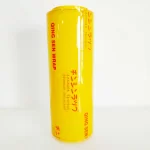Bubble film stretch wrapper
Controls – The controls allow the operator to adjust settings like speed, film tension, and stretch ratio. The controls may be manual switches or a programmable panel.
- Wrapping pattern – Bubble wrap forms an oval or circular pattern around the pallet, while spiral wrapfollows a continuous spiral pattern.
- Tightness of wrap – Bubble film tends to create a tighter, more conforming wrap around irregularly shaped items. Spiral wrap is looser.
- Film usage – Bubble wrap uses more film overall due to the amount of stretching required. Spiral wrap is more efficient with film usage.
- Pallet coverage – Bubble wrap provides more complete coverage of the pallet and load, especially the corners. Spiral wrap may leave sides and corners exposed.
- Load stability – The tight, conforming bubble wrap provides better load stability and unitization during transportation and storage.
- Suitability of loads – Bubble wrap is better for irregularly shaped loads that benefit from a tight, conforming wrap. Spiral wrap is more suitable for uniform, regularly shaped loads.
- Machine cost – Spiral wrap machines tend to be less expensive due to simpler designs and lower film usage.
- Machine speeds – Spiral wrappers can typically wrap pallets faster than bubble wrappersdue to less film stretching required.
- Maintenance – Bubble wrap machines require more maintenance due to the higher stresses on components from film stretching.
In summary, bubble film wrap provides a tighter, more secure wrap that is better suited for irregular loads and maximizing pallet usage. However it uses more film and the machines cost more. Spiral wrap is best for regular loads where a tighter wrap is not required. It offers better efficiency and lower machine costs.
